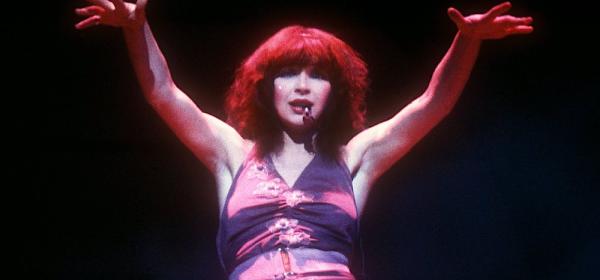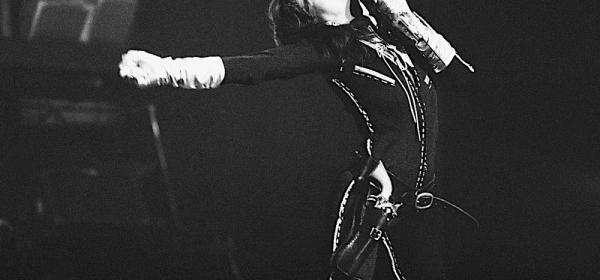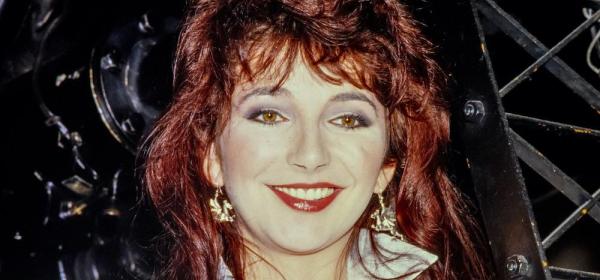THIS WOMAN’S WORK: KATE BUSH
With a new live album, Before the Dawn, out last week, we look at the influential legacy of the ‘motherless’ British songstress.
On the seminal rap album Enter the Wu-Tang (36 Chambers), Method Man explains that his homie Ol’ Dirty Bastard earned that name because “there ain’t no father to his style.” Writing of his love for Kate Bush in Mojo in 2003, trip-hop titan Tricky applied a similar description … extending it to stylistic orphandom. “Some of the greatest singers in the world, you can spot their influences. But Kate Bush has no mother or father.”
She has plenty of offspring, though. A pioneer of operatic, eclectic, cerebral pop music, layered with meaning and feeling, an artist with a keen sense of the theatrical, the influence of Bush’s work can be felt across the generations. In her ’80s contemporaries Madonna, Annie Lennox / Eurythmics, Tanita Tikaram, Erasure, and the Arthur Baker-produced Fleetwood Mac. In the ‘90s, the likes of kd lang, PJ Harvey, and Tori Amos. And more recently, St Vincent, Ladyhawke, Charli XCX, Goldfrapp, Bat for Lashes, Lady Gaga, even Coldplay … who readily admit that "Speed of Sound" was inspired by "Running Up That Hill". (“We tried to copy the drums, guitar, melody,” Chris Martin confessed.)
Reaching Number 3 on the UK charts, that heart-wrenching 1985 12” classic was Bush’s biggest hit of the ’80s, the decade she’s most closely associated with. In fact though, she’s continued to consistently crank out the hits … at notoriously irregular intervals … and is the only female artist to have had albums achieve Top Five positions in the British charts in five successive decades.
Bush’s breakout came with the 1978 Number One, "Wuthering Heights". Inspired by the novel from Emily Bront (with whom Bush happens to share a birthday), the single and the album it was drawn from, The Kick Inside, were only released after Bush had spent two years readying herself, her sound and her aesthetic for public consumption.
The term ‘multimedia’ had been in use for 12 years by that time, but it may as well have been invented for Kate Bush. The first sign of the visual/literary/philosophical/aural artform she’d carve out came in her preparation for her major label debut. Judging stage presence and distinctive imagery to be just as important as the music, Bush famously used much of her ample advance from EMI on classes in interpretive dance and mime; she’d already trained extensively in karate as a teen. The songs? Those she’d started hammering out aged 13. Her first album would primarily comprise tunes she’d completed by 16 years of age.
With the moves and material down, Bush finally set about recording her debut with producer Andrew Powell. Powell was a friend of Pink Floyd’s Dave Gilmour, who’d helped Bush put together her deal-sealing demo. “I didn't realise how commercially successful she might be,” Gilmour has said. “I thought of her more really, I suppose, in the terms of someone like Joni Mitchell … the level of a lady who's very talented, but would appeal to a more esoteric audience. But she had different ideas.”
A complete revelation, unlike anything that’d gone before it, "Wuthering Heights" was astoundingly successful for a song so iconoclastic. The first UK Number One hit written and performed by a female artist, it also topped the Australian charts, but fared poorly Stateside, the American label failing to market Bush as a singer-songwriter and instead, emphasising her (admittedly, highly appealing) physical attributes.
Not yet out of her teens, Bush had learnt a valuable experience about taking charge of the way her music was made and represented. She continued to collaborate with Powell on her follow-up album, Lionheart, but began assuming ever-greater production duties, and micromanaged the creative direction of the promo live tour (shows featured an astounding 17 costume changes). She co-produced her third LP, Never for Ever … the first album by a British female artist to reach Number One on the UK charts … and began experimenting with synths and electronic music, collaborator Peter Gabriel having introduced her to groundbreaking Aussie-developed proto-sampler, the Fairlight CMI (Computer Musical Instrument).
She entirely assumed production duties on fourth album, The Dreaming (1982) and built a studio near her home to create her fifth, 1985’s Hounds of Love, the springboard for smash "Running Up That Hill".
Perversely, it was after she’d fixed herself up with the sort of readily-available studio facilities that would’ve allowed her to ramp up her creative input that progressively Bush began to slow her releases. There was a four-year break between Hounds of Love and 1989’s The Sensual World, another four before 1993’s The Red Shoes, then a torturous 12-year gap to Aerial in 2005, and finally a burst of output six years later, with two albums … Director’s Cut and 50 Words for Snow … in 2011. And nothing new since… Until the live album Before the Dawn released last week, along with live single, "And Dream of Sheep".
Maybe she’s been spending more and more time reading, pondering existence. A highly literary, philosophical, culturally engaged individual, this is, after all, an artist who’s taken inspiration for songs from such diverse sources as a Hans Christian Andersen fairy tale, early-20th century mystical thinker George Gurdjieff and pioneering psychoanalyst Wilhelm Reich, author Henry James, comedians Monty Python, the films of Francois Truffaut and Woody Allen, Tennyson’s poetry, the history of Australia’s indigenous people, and of course, the work of Emily Bront.
Bush, who’s a mother, has said the timeouts have been down to her prioritisation of family and personal relationships, and the fact that the act of releasing and touring albums actually makes her feel disengaged from who she truly is as an artist. “The more I got into presenting things to the world, the further it was taking me away from what I was, which was someone who just used to sit quietly at a piano and sing and play,” the mostly self-taught musician (who still can’t read a note) once told Rolling Stone. “It became very important to me not to lose sight of that.”
Her musical offspring, those who’ve followed her lead, applaud Bush all the more for this ‘pace yourself’ approach. “It’s fantastic that she’s not been driven by outside forces, she’s just driven by herself…. She built a whole universe that was her own,” said Bjork. “She should be treasured more than The Beatles,” reckons aforementioned fan, Tricky. “That she isn’t is probably down to her own personality, because she can walk away from everything, and not make albums, and I so respect her for that. Just to live your life, and not play the game … to me, that’s success.”
- Christian Barker




